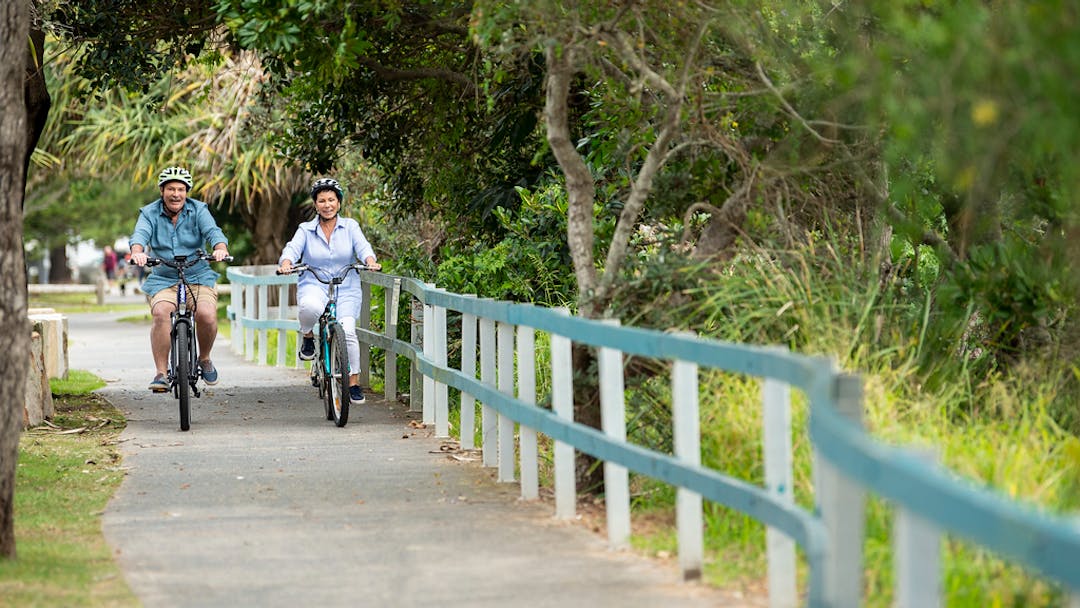Active Transport Strategy
Consultation has concluded

The Clarence Valley Active Transport Strategy 2024–2044 has now been adopted by Council.
View the final Strategy here.
Submissions closed 4pm, Thursday, 28 March 2024.
The Draft Active Transport Strategy 2024 – 2044 details Council’s commitment to creating more opportunities for people to choose walking and bike riding to travel around our diverse townships and villages.
The Strategy provides the blueprint for creating the conditions in which walking and riding are safe, convenient, and accessible to people of all ages and abilities. By doing so, the community benefits from having a sustainable, affordable, and healthy means of transport. This is especially useful for the many short to medium trips that take place every day across the Clarence Valley.
Active transport is any form of land transport that requires some form of human propulsion; principally walking and bike riding. It also includes e-bikes and the use of wheelchairs, mobility scooters, walking aids, or other small personal mobility devices.
The Strategy provides a detailed set of interlinked, prioritised, and costed actions to build the walking and cycling network. These identified actions will inform Council’s forward planning of infrastructure delivery, including being responsive to future development and infrastructure projects, and will assist in exploring funding opportunities.
The Strategy has a 20-year horizon enabling long-term planning and for large projects to be broken up into stages. However, it will be reviewed every five years to be adaptive to change.
What community consultation was involved in the development of this Strategy?
The Strategy was developed with input from a variety of stakeholders. Engagement activities focused on understanding current walking and bike riding behavior, as well as identifying barriers and ideas for promoting active travel.
Stakeholder engagement included:
- A workshop with Councillor's.
- Community engagement through online surveys, face-to-face pop-up sessions at various locations, and an online interactive map for documenting issues and ideas.
- Online workshops with Council staff from various functional areas.
- A meeting with Council’s Equal Access Advisory Committee.
Key themes from the engagement activities included:
- Inadequate walking and bike riding environments.
- Need for increased funding for building and maintaining active transport networks.
- Limited safe crossing points for pedestrians in many townships.
- Importance of all abilities access, including kerb ramps and footpath smoothness.
- Unsafe conditions due to speed limits on many streets.
- Opportunity to integrate place making with enhanced active transport infrastructure.
- Cost-effective integration of active transport connections in renewal projects and new developments.
- Creation of high-quality, scenic, and safe shared paths and bike lanes to connect key townships.
- Inclusion of amenities such as shade, drinking fountains, bike parking, and rest areas along the active transport network.